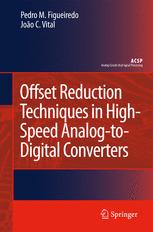

Most ebook files are in PDF format, so you can easily read them using various software such as Foxit Reader or directly on the Google Chrome browser.
Some ebook files are released by publishers in other formats such as .awz, .mobi, .epub, .fb2, etc. You may need to install specific software to read these formats on mobile/PC, such as Calibre.
Please read the tutorial at this link: https://ebookbell.com/faq
We offer FREE conversion to the popular formats you request; however, this may take some time. Therefore, right after payment, please email us, and we will try to provide the service as quickly as possible.
For some exceptional file formats or broken links (if any), please refrain from opening any disputes. Instead, email us first, and we will try to assist within a maximum of 6 hours.
EbookBell Team

4.8
104 reviewsOffset Reduction Techniques in High-Speed Analog-to-Digital Converters analyzes, describes the design, and presents test results of Analog-to-Digital Converters (ADCs) employing the three main high-speed architectures: flash, two-step flash and folding and interpolation. The advantages and limitations of each one are reviewed, and the techniques employed to improve their performance are discussed.
Since the offset voltages of the constituting sub-blocks of these converters (pre-amplifiers, folding circuits and latched comparators) present the definitive linearity limitation, the offset is the fundamental design parameter in high-speed CMOS ADCs. Consequently, offset reduction techniques must be employed, in order to achieve high frequency operation with low power and layout area. Averaging and offset sampling are the most widely used, both being thoroughly characterized:
Other relevant topics include kickback noise elimination in comparators, reference buffer design, a technique to compensate (certain) IR drops, details on the layout and floorplan of cascaded folding stages, and an improved scheme to select reference voltages in fine ADCs of two-step subranging converters. Special emphasis is given to the methods of guaranteeing specifications across process, temperature and supply voltage corners.